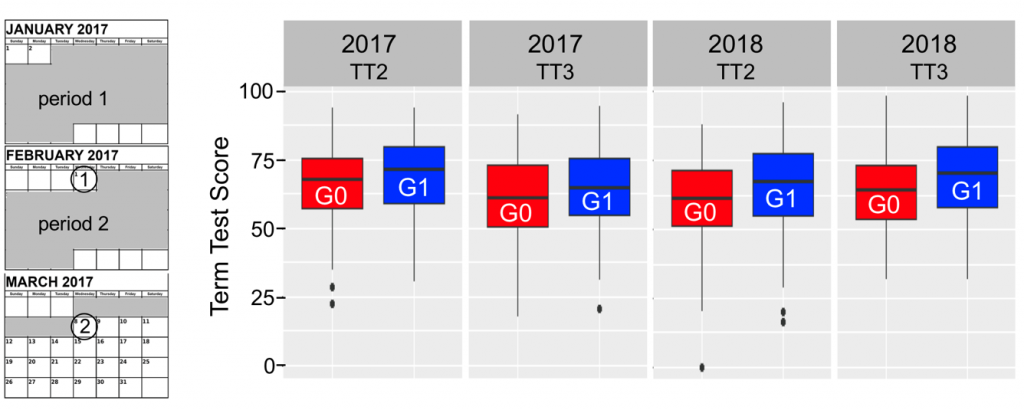Pedagogy
We recently published the results of a two-year study on Quizzical use in a sophomore level molecular biology class at the University of Toronto in CBE-LSE (Riggs et al., 2020)
Higher Quizzical Engagement Promotes Higher Test Scores
Boxplots of Quizzical engagement categories vs formal exams average. Full participation marks were awarded based on the student answering 10 questions per lecture within 14 days of the lecture, and scoring at least 60%. Three performance categories were used to model engagement.
The High category represents the top 25th percentile, the Mid represents the 25-75th percentile, and the Low represents the lower 25th percentile categories of student engagement, plotted against the average of the formal exams. Tukey’s multiple comparison test was employed and adjusted p-values were calculated. All pairwise comparisons were found to be statistically significant with p-values < 3×10-7. Including incoming GPA as a covariate did not influence the degree of significance

Does increasing one’s engagement from one test to the next test improve scoring on the second test? Yes
Increased Engagement is Correlated with Improved Exam Performance
Two time periods of Quizzical participation were monitored and their relationship to two term test dates (circled) are shown on the left panel (2017 data only, as an example). The second panel shows box plot data related to term test 2 scores in 2017. Students who participated less often in period 2 compared to period 1 are Group 0 (G0), whereas students who participated more in period 2 vs period 1 are Group 1 (G1). The other box plots show data for comparable periods for the final exam (2017 TT3) and comparable data from 2018 (plots 3 and 4). Paired T tests revealed statistical significance for all pairwise comparisons of G0 and G1 data (p-values are 0.03929, 0.0212, 0.0038, and 0.002, respectively).

